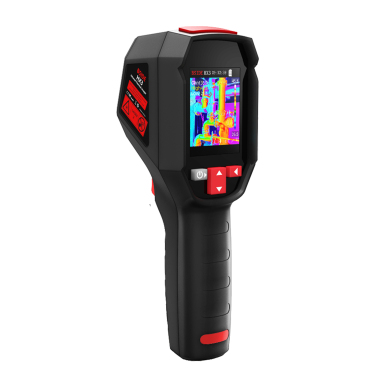
# Infrared Thermometer: A Non-Contact Temperature Measurement Tool
## Introduction to Infrared Thermometers
Infrared thermometers have revolutionized temperature measurement in various industries and everyday applications. These innovative devices allow users to measure temperature without physical contact, making them ideal for situations where traditional thermometers would be impractical or unsafe.
## How Infrared Thermometers Work
Infrared thermometers operate on a simple yet sophisticated principle. They detect infrared energy emitted by all objects above absolute zero temperature. The device focuses this energy through a lens onto a detector, which converts it into an electrical signal. This signal is then processed and displayed as a temperature reading.
Key components of an infrared thermometer include:
– Optical system (lens)
– Infrared detector
– Signal processing unit
– Display screen
## Advantages of Non-Contact Temperature Measurement
The non-contact nature of infrared thermometers offers numerous benefits:
1. **Safety**: Measure extremely hot or hazardous surfaces without risk
2. **Hygiene**: Ideal for medical applications where contamination must be avoided
3. **Speed**: Provides instant readings (typically within 1 second)
4. **Versatility**: Can measure moving objects or hard-to-reach areas
5. **Durability**: No moving parts that can wear out from contact
## Common Applications
Infrared thermometers find use in diverse fields:
### Medical Use
Keyword: infrared thermometer
– Fever screening (especially during pandemics)
– Body temperature measurement
### Industrial Applications
– Monitoring machinery temperature
– Electrical equipment inspection
– HVAC system maintenance
### Food Industry
– Checking cooking surfaces
– Monitoring food storage temperatures
– Verifying serving temperatures
### Home Use
– Checking baby bottle temperatures
– Measuring cooking surfaces
– Home maintenance tasks
## Choosing the Right Infrared Thermometer
When selecting an infrared thermometer, consider these factors:
1. **Temperature Range**: Ensure it covers your required range
2. **Distance-to-Spot Ratio**: Determines measurement area size at different distances
3. **Emissivity Settings**: Important for measuring different materials
4. **Response Time**: How quickly it provides readings
5. **Accuracy**: Typically ±1-2°C for most models
## Proper Usage Tips
To get accurate readings:
– Clean the lens regularly
– Hold the thermometer perpendicular to the surface
– Be aware of the distance-to-spot ratio
– Consider the emissivity of the material being measured
– Avoid measuring through glass or other transparent barriers
– Allow the device to acclimate to environmental temperature changes
## Limitations to Consider
While infrared thermometers are incredibly useful, they do have some limitations:
– Cannot measure internal temperatures
– Affected by dust, steam, or other obstructions
– Reflective surfaces may give inaccurate readings
– Ambient temperature extremes can affect accuracy
– Requires proper calibration for critical measurements
## Future Developments
Infrared thermometer technology continues to evolve with:
– Improved accuracy and smaller size
– Integration with smartphones and IoT devices
– Advanced data logging capabilities
– AI-powered temperature analysis
– Multi-spectral measurement capabilities
## Conclusion
Infrared thermometers have become an essential tool across many industries and in daily life. Their ability to provide quick, non-contact temperature measurements makes them invaluable for applications ranging from industrial maintenance to healthcare. As technology advances, we can expect these devices to become even more accurate, versatile, and integrated into our digital ecosystems.